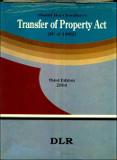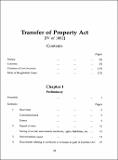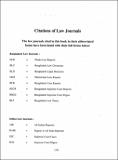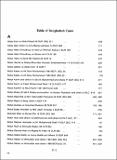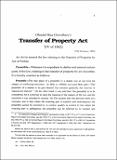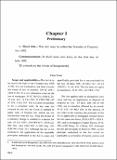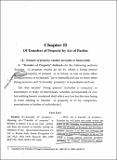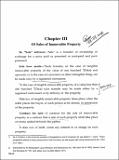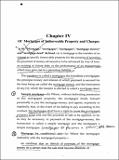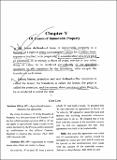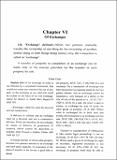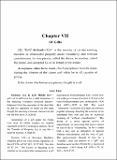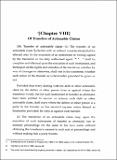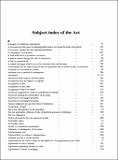| dc.description.abstract | Transfer of Property Act, 1882 (Act IV of 1882) enacted with a view to 'define and amend certain parts of law relating to transfer of properties by acts of parties'. This is not a consolidating Act, nor does it purport to be a complete code dealing with the transfer of properties. It only deals with the transfer of immovable property including certain incorporeal rights by one living person to another living person by voluntary acts. It is based on the English law of real property, and many of its provisions are borrowed from various enactments which it repeals and supersedes.
Although the Act applies to the transfer of properties between living persons, the ambit of the words 'living person', by an amendment in 1925, has been enlarged to include artificial or legal person such as a company or an association of individuals. It includes current as well as future transfer transactions. In this Act, 'property' has been defined in a generic sense to mean not only physical objects but also interests comprised therein. It includes the right of equity redemption and a debt secured by charges. Actionable claims are also properties of this category.
The Transfer of Property Act specifically deals with certain modes of transfer of properties by way of sale, mortgage, gift, exchange and lease. Sale of immovable properties of the value of one hundred taka or more must be effected by registered instrument. Immovable properties of the value of less than one hundred taka can be transferred either by a registered instrument or by simple delivery of possession. The rights and obligations of the buyers and sellers have been enumerated in section 55 of the Act. The Act defines mortgage as the transfer of an interest in specific immovable property for the purpose of securing payment of money advanced by way of loan or performance of an engagement which may give rise to a pecuniary liability. The Act enumerates six types of mortgages, viz, (i) simple mortgage, (ii) mortgage by conditional sale, (iii) usufructuary mortgage, (iv) English mortgage, (v) mortgage by deposit of title deed and (vi) anomalous mortgage. In all mortgages where the principal money secured is one hundred taka or more, every mortgage other than a mortgage by deposit of title deeds has to be registered as well as effected with at least two witnesses.
The Transfer of Property Act is a general law dealing with the various modes of transfer of immovable properties and actionable claims. Any dispute arising out of this Act comes within the jurisdiction of the civil court. While the transfer of agricultural land was governed by the BENGAL TENANCY ACT (now EAST BENGAL STATE ACQUISITION AND TENANCY ACT), the transfer of both non-agricultural land and houses and premises on such land was regulated by the provisions of the Transfer of Property Act till enactment of separate legislation on the subjects. These separate and special statutes are (i) The Non-Agricultural Tenancy Act, 1949 and (ii) The Premises Rent Control Act, 1991. The latter had its origin in the Bengal House Rent Control Order, 1942. The disputes relating to determination of rent for premises and deposit of rent by the tenant, repair of rental premises in municipal areas are to be filed with and settled by the Controller (of House Rents) appointed under the Premises Rent Control Act, 1991. | en_US |

